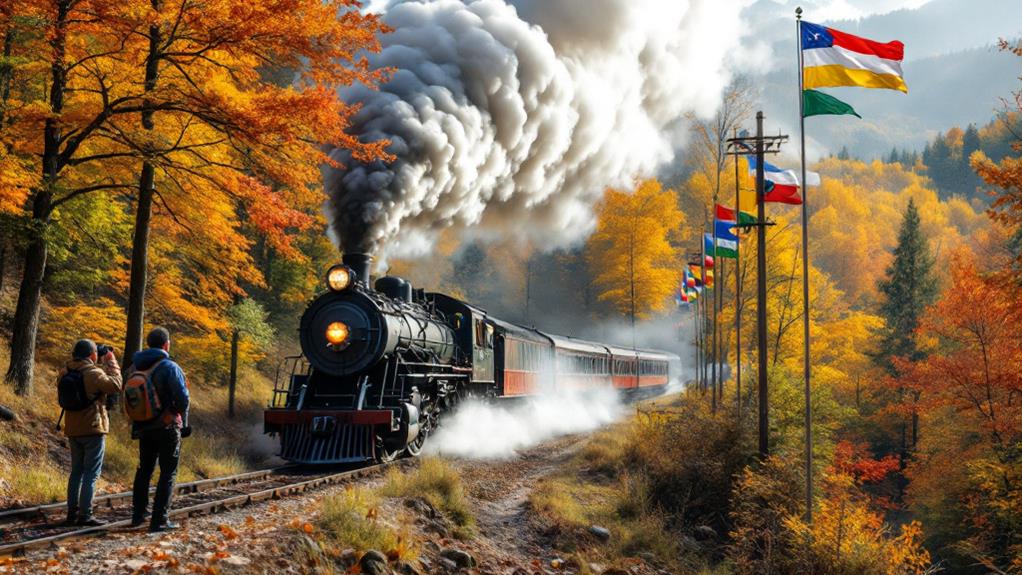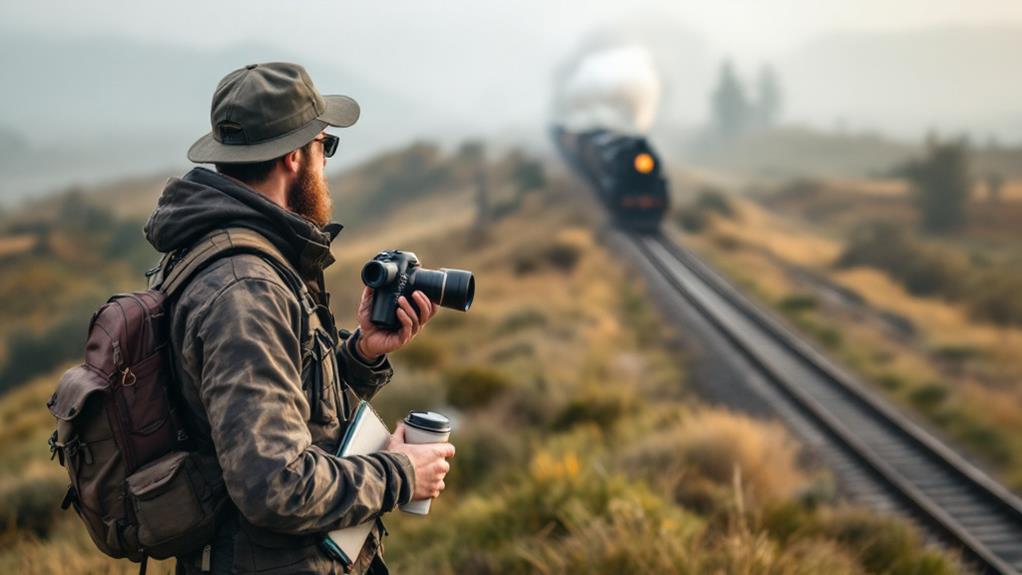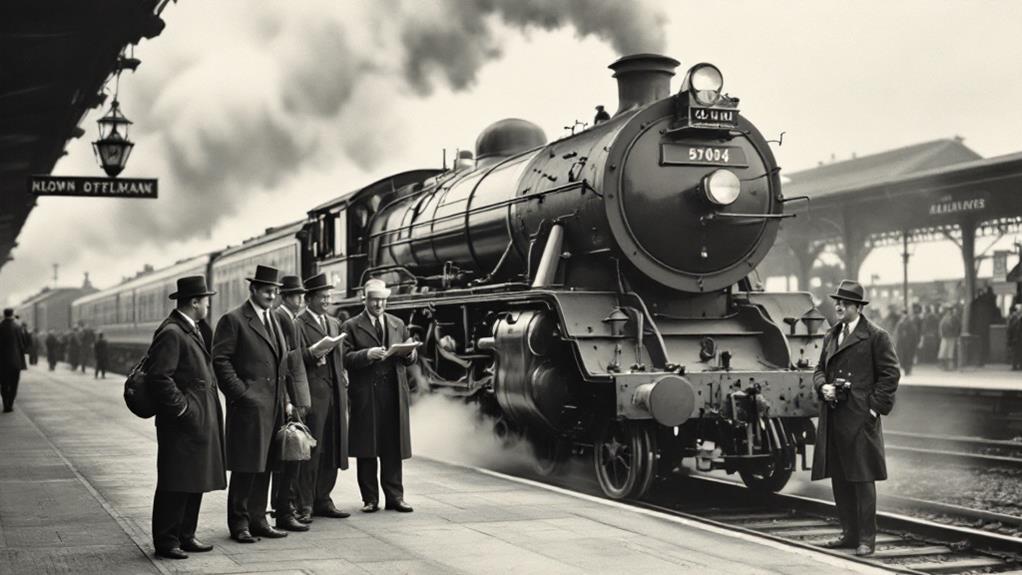Safety Tips and Rules for Respectful Trainspotting
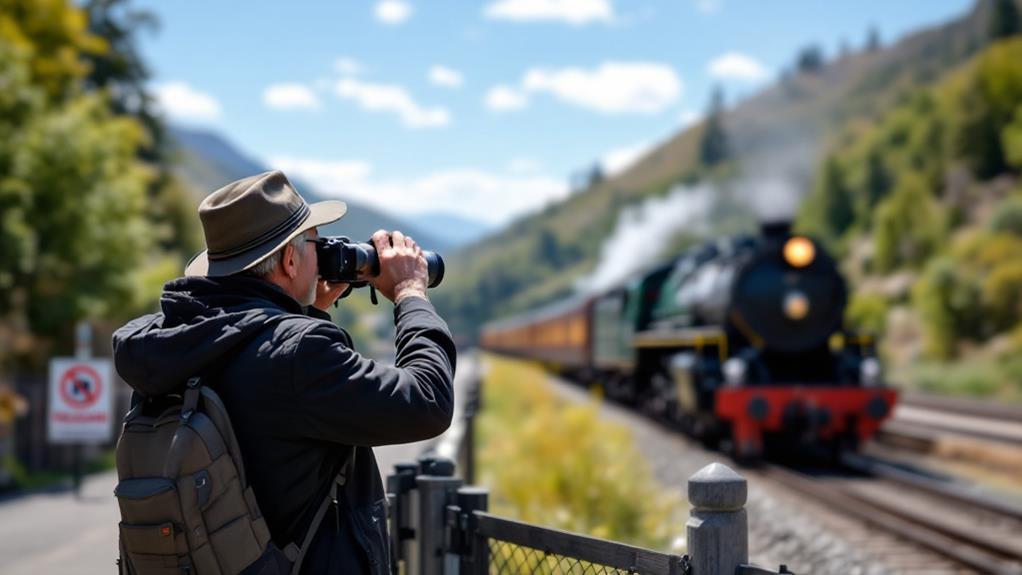
When trainspotting, prioritize safety and respect. Choose designated observation areas and stay at least 25 feet from the nearest rail. Never trespass on railroad property or enter restricted zones. Obey all posted signs and follow local regulations. Stay alert to your surroundings and avoid distractions that could impair your ability to hear approaching trains.
If photographing, obtain necessary permissions and use equipment responsibly. Be polite and leave immediately if asked by authorities or landowners. Remember, trainspotting is about enjoying the hobby while preserving its future. By following these guidelines, you'll guarantee a safer and more enjoyable experience for everyone involved.
Choose Safe Observation Locations
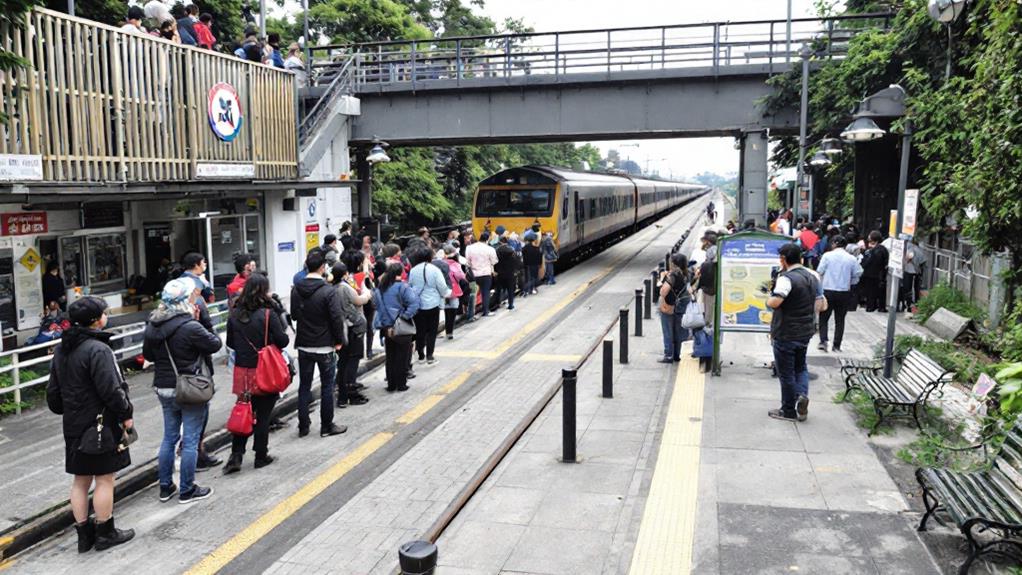
Choosing safe observation locations is paramount for responsible trainspotting. When selecting a spot to watch trains, prioritize your safety and the safety of others. Seek out designated railfan observation areas or platforms specifically designed for train viewing. These locations offer ideal vantage points while keeping you at a safe distance from active tracks.
Always avoid standing on or too close to railroad tracks. Remember that trains can't stop quickly and may overhang the tracks, putting you at risk. Obey all posted signs, warnings, and instructions from railway personnel to guarantee your safety. Be mindful of your surroundings and steer clear of areas with limited visibility, poor lighting, or uneven terrain that could lead to accidents.
Before embarking on your trainspotting journey, check with local authorities or the railway operator to understand any specific safety regulations or prohibited areas in your region. Use designated platforms whenever possible, and avoid obstructing views of other enthusiasts or interfering with railway operations. By choosing safe observation locations and following these guidelines, you'll enjoy a responsible and respectful trainspotting experience while minimizing risks to yourself and others.
Maintain Distance From Tracks
Once you've found a safe observation spot, maintaining a proper distance from the tracks is paramount for your safety. Always stay at least 25 feet (7.6 meters) away from the nearest rail to avoid any potential danger from passing trains. Remember, trains can approach silently and suddenly, so it's vital to remain vigilant and alert at all times.
Under no circumstances should you stand, sit, or walk on active railroad tracks. This behavior isn't only extremely dangerous but also illegal. Refrain from trespassing on railroad property, as it puts your life at risk and can result in legal consequences. Always obey all signs, signals, and instructions regarding safe distances from the tracks and stay clear of equipment.
Keep a watchful eye on train movements and be prepared to move further away if necessary. Even if you think you're at a safe distance, unexpected situations can arise. By consistently maintaining a proper distance, you'll guarantee your safety while enjoying your trainspotting experience. Remember, respecting these safety guidelines isn't just about protecting yourself; it also helps preserve the hobby for future enthusiasts by demonstrating responsible behavior around railway areas.
Respect Private Property
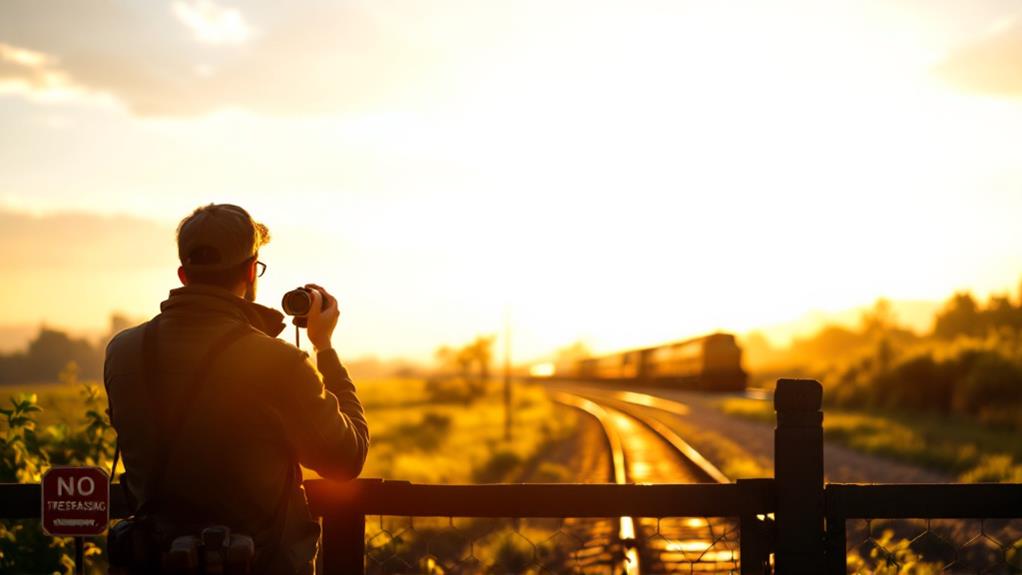
Where do trainspotters often run into legal trouble? Trespassing on private property near railroad tracks is a common issue that can lead to fines or criminal charges. It's imperative to understand that railroad companies own the land on both sides of the tracks, and public access is typically prohibited without permission.
To stay on the right side of the law, you should always respect posted signs, fences, and other barriers that indicate private property. Avoid entering railroad yards, bridges, tunnels, or any areas marked as off-limits. If you're unsure about the ownership of a particular spot, it's best to err on the side of caution and find an alternative location.
If you're determined to access a specific area for trainspotting or photography, obtain permission from the railroad company or landowner beforehand. This approach not only keeps you legal but also helps build positive relationships with property owners. If you encounter security personnel or landowners while trainspotting, remain polite and avoid confrontation. Be prepared to leave immediately if asked, as arguing or resisting can escalate the situation and lead to more serious consequences.
Follow Local Regulations
Following local regulations is just as important as respecting private property when it comes to trainspotting. You must adhere to all laws and regulations governing railroad property and public safety in your area. Trespassing on railroad tracks or right-of-way is illegal and can result in hefty fines or even criminal charges. To stay safe and within the law, only observe trains from designated public areas like platforms or official observation decks.
If you're planning to photograph or film trains, you may need to obtain necessary permissions from the railroad company, especially if you're on or near private property. Always respect signage, barriers, and warnings to prevent accidents and avoid legal consequences. It's imperative to stay alert and avoid distractions while trainspotting, as your safety should be your top priority.
Remember that local regulations can vary, so research the specific rules in your area before embarking on any trainspotting activities. By following these guidelines and staying informed about local laws, you'll guarantee a safe and enjoyable trainspotting experience while maintaining a positive relationship with railroad companies and authorities.
Be Aware of Surroundings
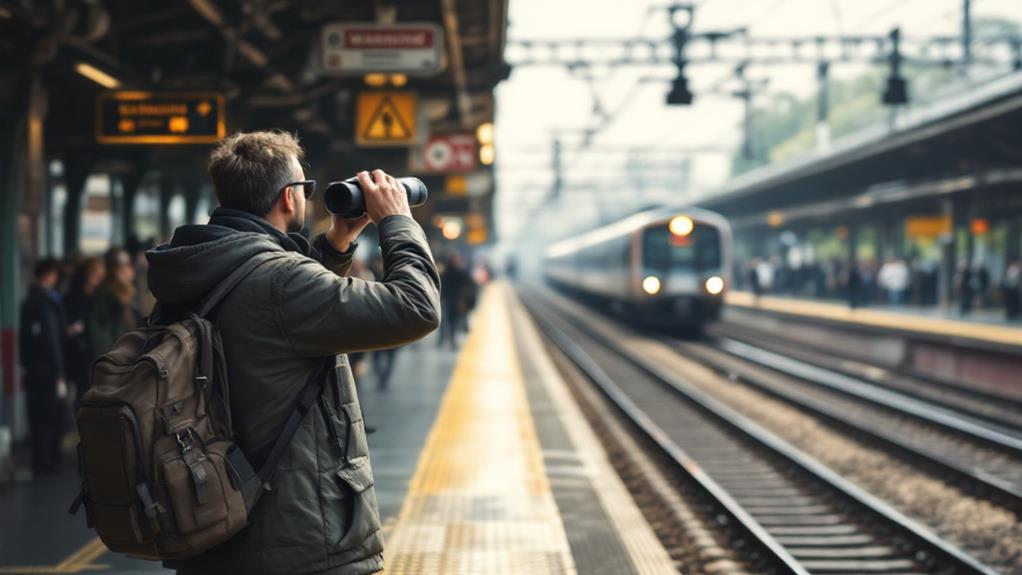
Being aware of your surroundings is essential for safe trainspotting. As you indulge in this hobby, it's vital to stay vigilant and pay attention to your environment. Trains can approach quickly and unexpectedly, so remain alert at all times. Position yourself carefully in relation to the tracks, keeping a safe distance to avoid potential dangers.
Always heed warning signs, signals, and instructions provided by rail operators or local authorities. These are in place for your safety and should never be ignored. To affirm you're fully aware of your surroundings, avoid distractions that could impair your ability to hear approaching trains, such as using your phone or listening to music.
When trainspotting, remember to:
- Access only designated viewing areas approved for public use
- Keep a safe distance from the tracks at all times
- Regularly scan your environment for potential hazards
Practice Responsible Photography
While staying alert to your surroundings, you'll likely want to capture the trains you spot. To practice responsible photography, always obtain permission before taking pictures on private property or restricted areas near train tracks. This guarantees you're not trespassing or violating any regulations.
When setting up your shot, be mindful of your equipment. Use tripods carefully to avoid creating obstacles or distractions for others. Additionally, refrain from using camera flashes or bright lighting that could startle train operators or compromise safety.
As you frame your shots, be considerate of others. Exclude personal information or copyrighted material without permission, and respect the privacy of fellow trainspotters by not capturing them without consent. Remember, everyone has a right to enjoy their hobby without unwanted exposure.
Lastly, familiarize yourself with and follow all posted photography rules and regulations. These guidelines are in place to confirm both your safety and legal compliance. By adhering to these principles, you'll contribute to a positive trainspotting community and help preserve the activity for future enthusiasts.

